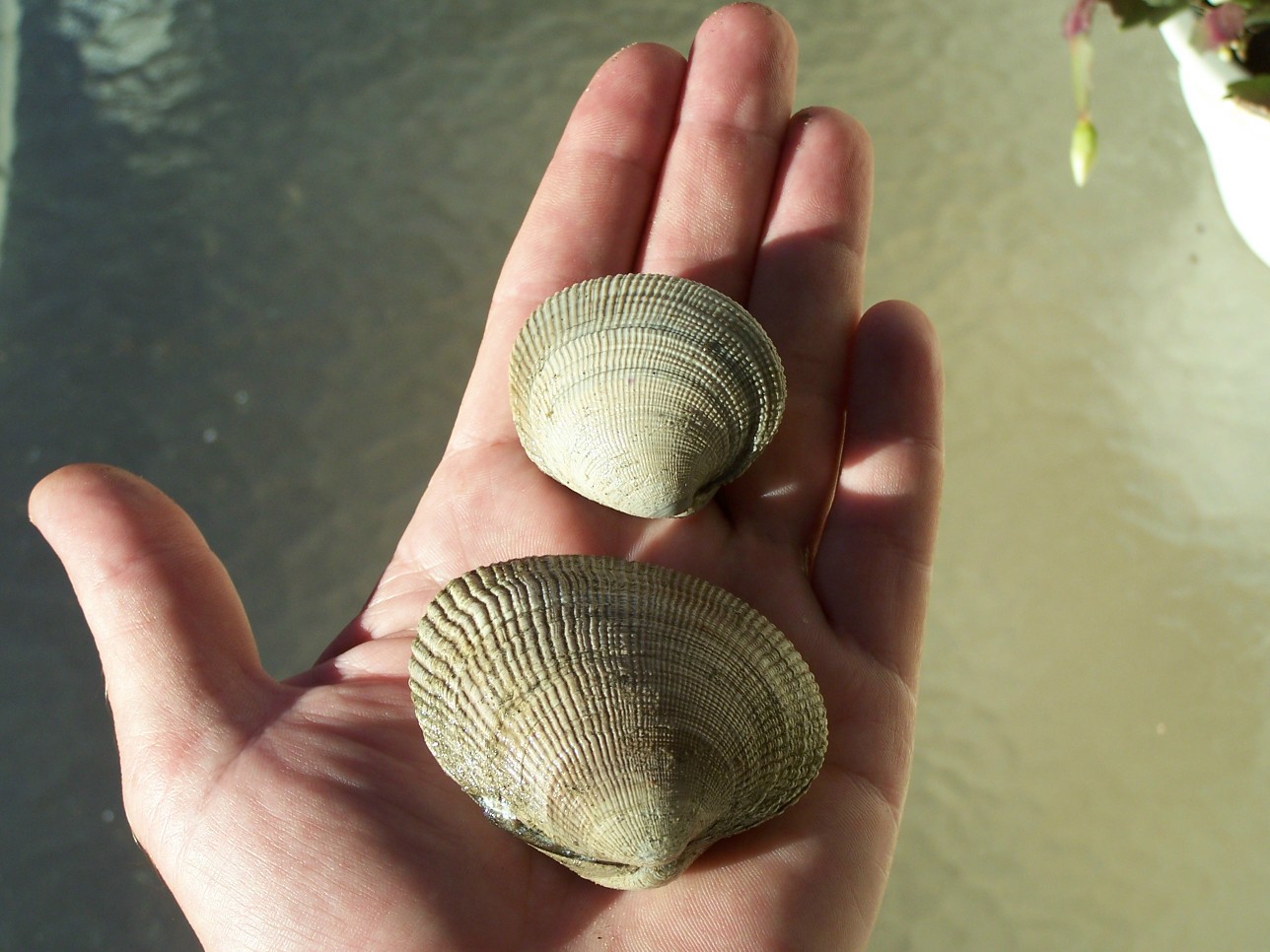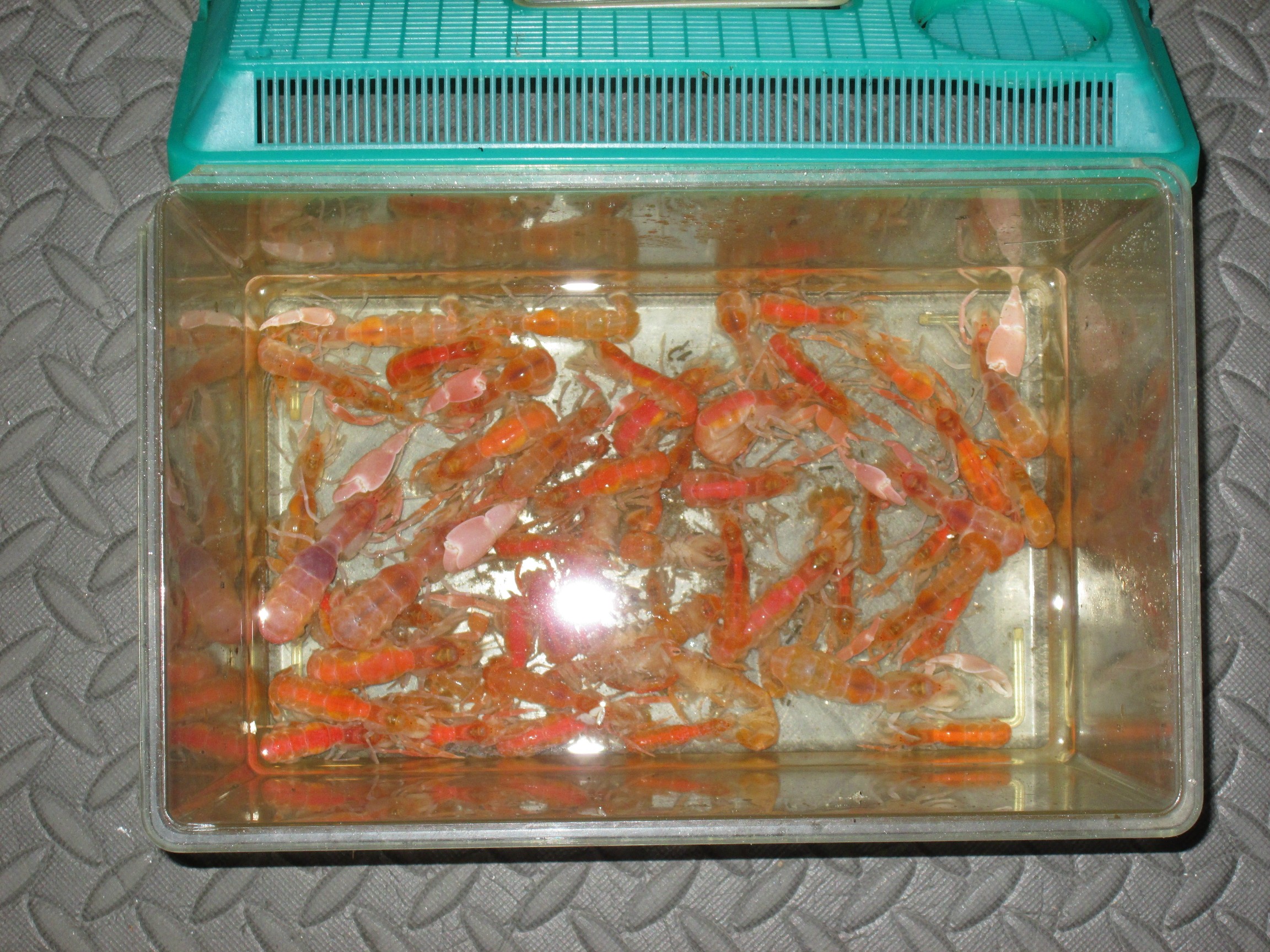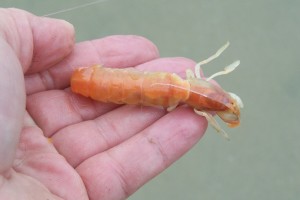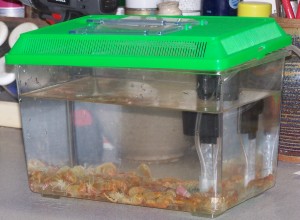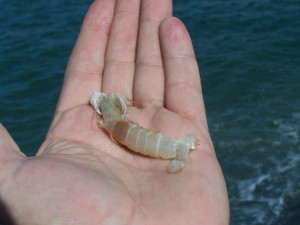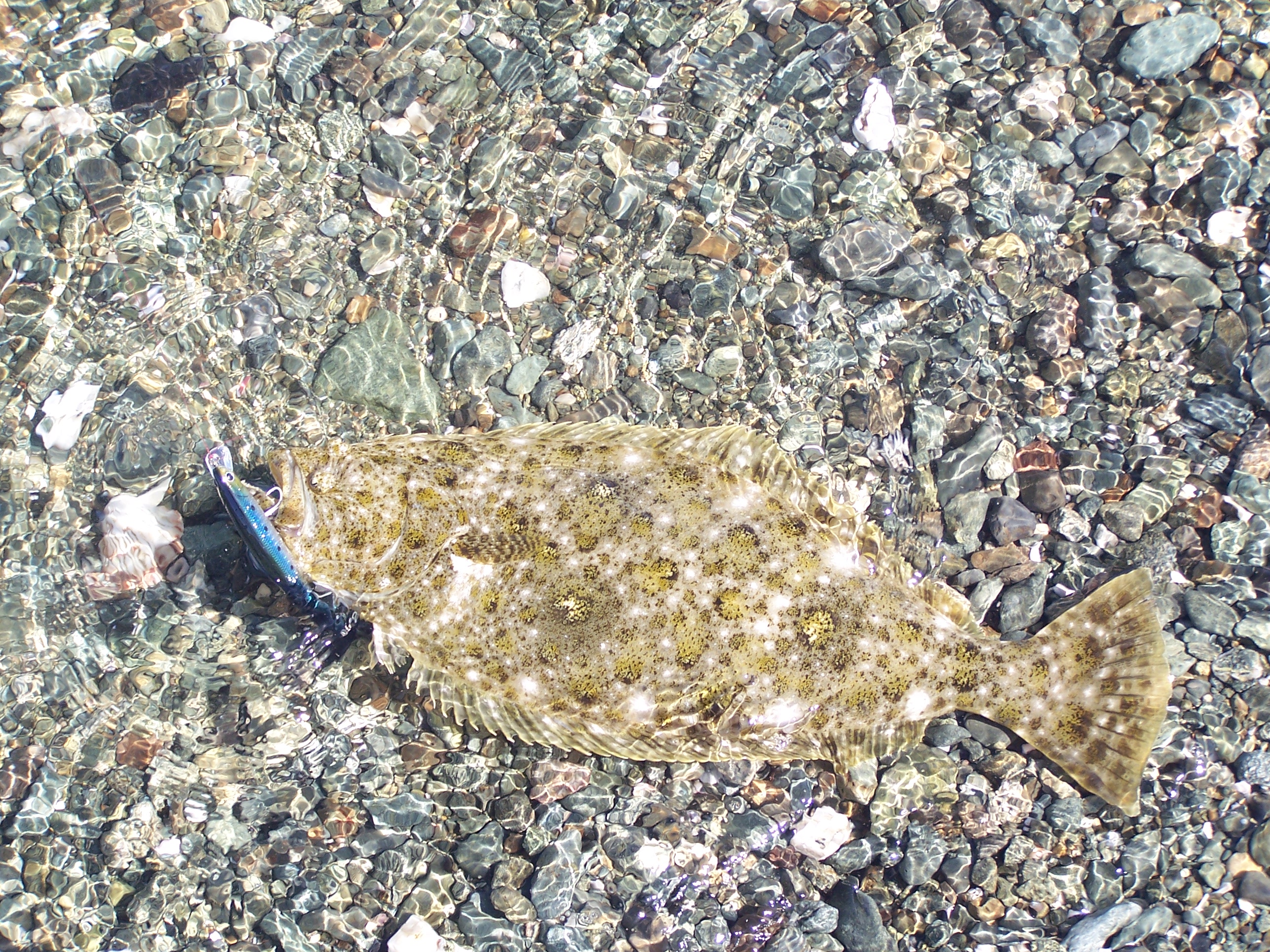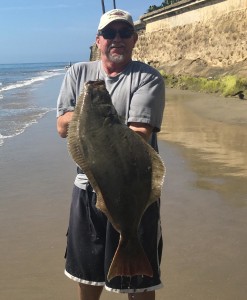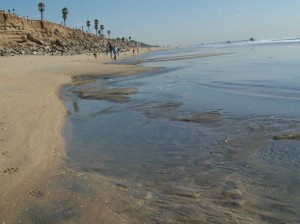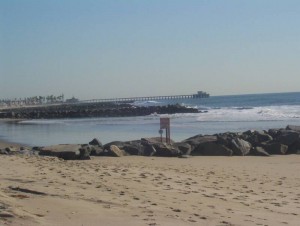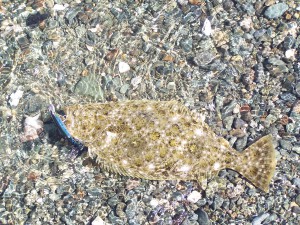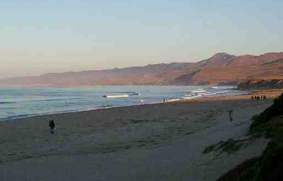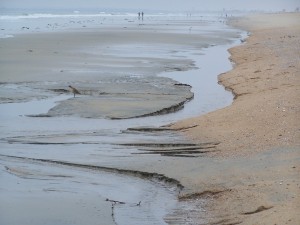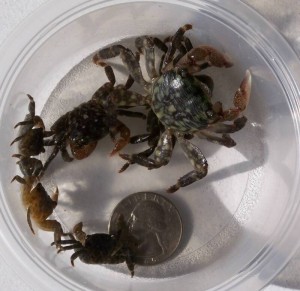CLAMS AND THE MLPA
Fishing with clams and clearing the water
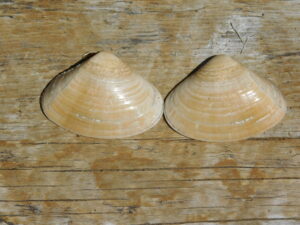
This time of year always brings me a laugh. A few years ago when my son was on the surfing team he came home one day with a story about a young surfer who was thrown from her board, hit the bottom, and came up with a face full of clams. I hurriedly drove him to school and made my way to the beach where I caught a handful of spotfin croaker right at her clam spot.
October and November have always been great months for fishing with clams for corbina and spawning spotfin croaker. By this time surf fish are stuffed with sand crabs and as fall comes around they tend to search for other bait to forage and prepare for winter. Clams spawn at this time of year and become one of the favorite foods for surf 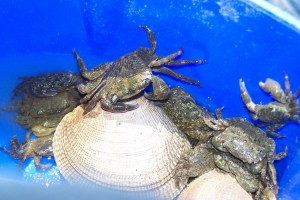 fish. But besides being used for fall surf baits clams may also be one of the answers to improving our fishery and eventually limiting MLPA closures.
fish. But besides being used for fall surf baits clams may also be one of the answers to improving our fishery and eventually limiting MLPA closures.
Here’s the truth: The MLPA closures were put in place with very little science to back the claim that decreasing fish stocks were created by fishermen. In fact, nothing scientific or plausible was put forward to explain the decline at all. What’s worse is that the program is so woefully under-funded that there is not nearly enough money for ongoing research to determine if the closures are working and making the resource more productive and sustainable.
The dirty little secret that politicians and activists don’t discuss is that the recreational angler has nothing to do with a decrease in fish stocks or habitat. It’s not fisherman but unbridled growth that has lead to diminishing the clarity of local waters and therewith fish stocks along the coast.
Both Los Angles and Orange County have a long history of dumping. From 1892 until the completion of full secondary treatment on November 23, 1998 the Hyperion Plant located in El Segundo dumped billions of gallons of untreated raw sewage each year directly into the Santa Monica Bay.
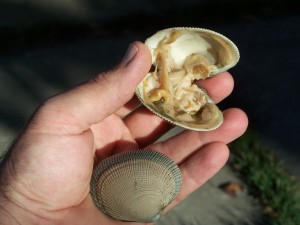 In addition, every time it rains millions of gallons of oil, radiator fluid, gasoline, trash and other carcinogens are washed off the streets from every county in Southern California and sent untreated into the ocean. Even without rain the Hyperion plant discharges enough treated sewage everyday to fill the Rose Bowl to the rafters!
In addition, every time it rains millions of gallons of oil, radiator fluid, gasoline, trash and other carcinogens are washed off the streets from every county in Southern California and sent untreated into the ocean. Even without rain the Hyperion plant discharges enough treated sewage everyday to fill the Rose Bowl to the rafters!
South of the Hyperion, the Orange County Sanitation District works to complete their secondary facilities but still dumps enough primary treated sewage into the ocean off Huntington Beach to fill an area the size of Newport Beach’s back bay. Most of the sewage there is treated with bleach, which is also discharged into the ocean.
These water quality issues and the removal of natural marine estuaries mean it’s not the fisherman’s fault. The fisherman didn’t create this problem. It’s the result of water pollution, urban sprawl, inept management, corruption and neglect that have put our ocean at risk.
So why is water quality so important? In the 1930′s most of the Santa Monica Bay’s water was crystal clear but as effluents from sewage and urban runoff filled the bay the water became turbid. Because of the lack of light that reaches the bottom, the basic building block of marine environments (simple marine algae) is unable to grow. As a result, there is less food for the smallest of marine creatures so they move or die off. In return, the larger bait fish and other marine creatures leave the area to find a new place to forage. So once the essential building block of the ocean is gone most fish leave with it.
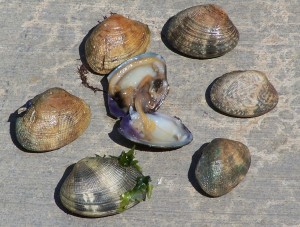 By allowing sewage (treated or not) and urban runoff to find its way to the ocean, turbid water rather than clear water, does not provide enough sunlight to sustain the fragile marine environment. Over fishing has very little to do with a lower biomass of marine creatures as does the toxic nature of the runoff. The biggest culprit by far has been the increased turbidity that does not allow light to penetrate the ocean in order to spawn basic algae–the essential building block of any marine environment.
By allowing sewage (treated or not) and urban runoff to find its way to the ocean, turbid water rather than clear water, does not provide enough sunlight to sustain the fragile marine environment. Over fishing has very little to do with a lower biomass of marine creatures as does the toxic nature of the runoff. The biggest culprit by far has been the increased turbidity that does not allow light to penetrate the ocean in order to spawn basic algae–the essential building block of any marine environment.
Recently, scientists at both Stanford University and the University of Maryland have found that filtration from farm raised clams has contributed directly to a reduction in water turbidity, improvement in light penetration, increases in oxygen and the removal of nitrogen (a byproduct of gardening, agriculture and big cities).
The EPA has recognized the benefits of shellfish and the University of Rhode Island published a study last year in the Journal of Shellfish Research that shows the improvements to water quality also increase the diversity of marine life.
Bivalves like clams and oysters filter water at an average of about 15 gallons per day per. So setting up fields of farm raised clams and oysters can have a dramatic effect on water clarity. For example, a one acre parcel of ocean bottom lined with shell fish in polyester mesh bags would produce approximately 8,160,000 gallons of filtered water per day!
Besides their positive environmental effects bivalve farming would produce much needed food and jobs for California. Aquaculture in Florida, just for bivalue farming alone, has produced more than $53,000,000 in revenue each year since 2012.
Placement of clam and oyster beds in river mouth areas like Ballona Creek and local harbor entrances will have an immediate effect by increasing water clarity and helping to mitigate urban runoff. At some point sensible, well-funded marine life closures may help us better understand the nuances of the ocean. But until we clean the water and provide a more sustainable environment marine life will not be able to achieve acceptable management levels.
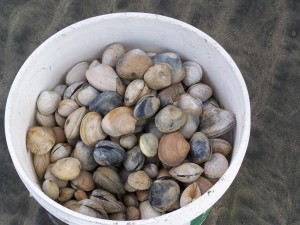 So, at least that gives us an excuse that until changes are made we’ll just have to use clams to catch surf fish. Some of my favorite bivalves for fishing include little neck clams(Protothaca staminea), cockles(Clinocardium californiense) and Pacific razor clams(Siliqua patula).
So, at least that gives us an excuse that until changes are made we’ll just have to use clams to catch surf fish. Some of my favorite bivalves for fishing include little neck clams(Protothaca staminea), cockles(Clinocardium californiense) and Pacific razor clams(Siliqua patula).
Clams seem to work their best in the months of October through December. As a clue to what fish are eating I look for beds of small orange and white bean clams (Donax gouldii) that form near the low tide mark in huge beds. You can usually find these in October and although they are not the clams we use for bait, it lets us know this is what the fish are eating.
The best place to find these clams (with the exception of razor clams) is in inlet areas that are flushed by daily tides. Harbors, inlets, estuaries and any marine environment where saltwater washes over rocks is a good place to look. Most clams occur near or under rocks.
I look for areas that have small rocks (about the size of a shoe box) and turn them over. By using a small hand cultivator you can turn over the mud and sand near the rocks and find clams. I use gloves and the cultivator because of the many barnacles on the rocks and sharp objects in the sand.
For razor clams stay away from the rocks and concentrate on sand and mud flats inside harbors and estuaries. This is where you will find razor clams anywhere from one to three feet below the surface. By using a shovel you can cover a larger area and sift through the muck to find razors for bait.
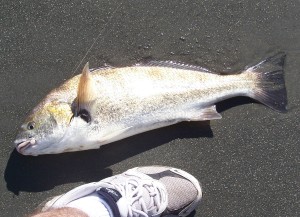 The best tide to find clams is always low tide. This allows you to harvest an area that is covered by water at high tide. As with collecting most types of bait, go down to your local harbor or inlet to explore and dig around at low tide. You will be amazed at what you find and you’ll know exactly where to go when you next need bait.
The best tide to find clams is always low tide. This allows you to harvest an area that is covered by water at high tide. As with collecting most types of bait, go down to your local harbor or inlet to explore and dig around at low tide. You will be amazed at what you find and you’ll know exactly where to go when you next need bait.
When you’re finished hunting the elusive clam replace the rocks and try to leave the spot as undisturbed as possible. Just
take what you will need for a couple of days of fishing.
Clams will last in your refrigerator for about one week. Be sure they are in a tight container. I open clams at the beach by crushing their shell with my pliers. You may also open them at home the night before. Be sure to keep them in their own juice so they don’t dry out.
When you open clams you will find two distinct meats. One meat is very soft and should be put on the hook first. The other meat is very rubbery and is sometimes characterized by a bright orange color. When using clams I like to employ the Carolina Rig.
Now it’s time to hook the clam. Once you’ve opened the clam carefully pull out all of the meat. First hook the soft part of the bait. Then hook the rubbery (normally yellow or orange) section. This will help the clam stay on your hook for a good cast. Check your bait periodically to make sure it’s securely hooked. You’ll find that clams are durable and work great for surfperch, corbina, yellowfin and spotfin croaker.
Fall months have always been a great time for using clams in the surf. If you are collecting them yourself take a few moments to become familiar with the DFW rules by going to: www.wildlife.ca.gov/Fishing/Ocean . Please take just what you need for bait and catch, photo and release whenever possible.
